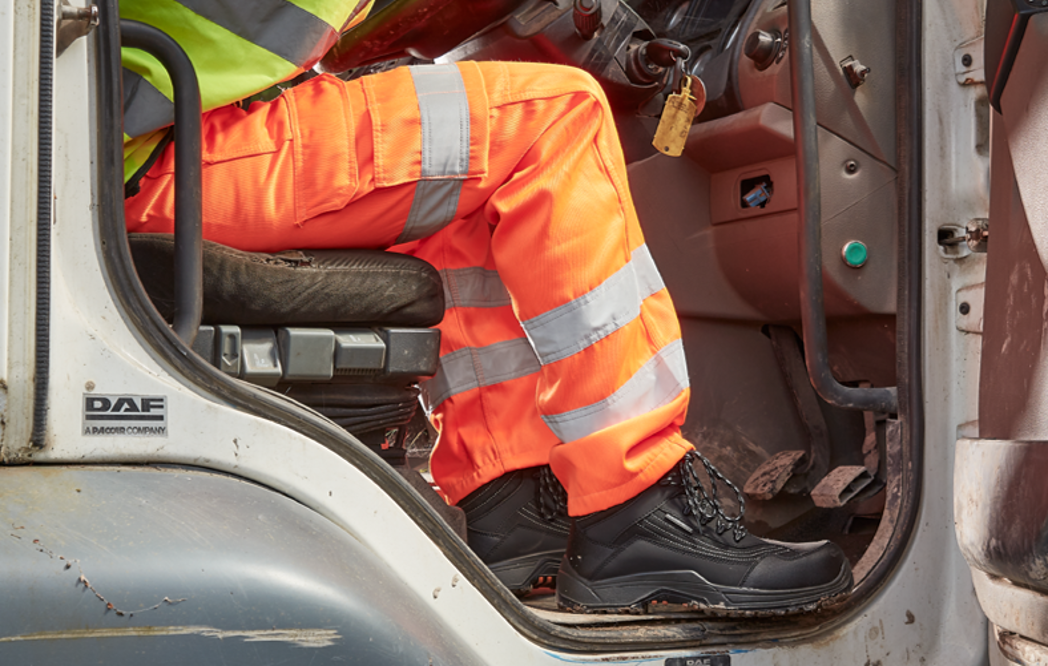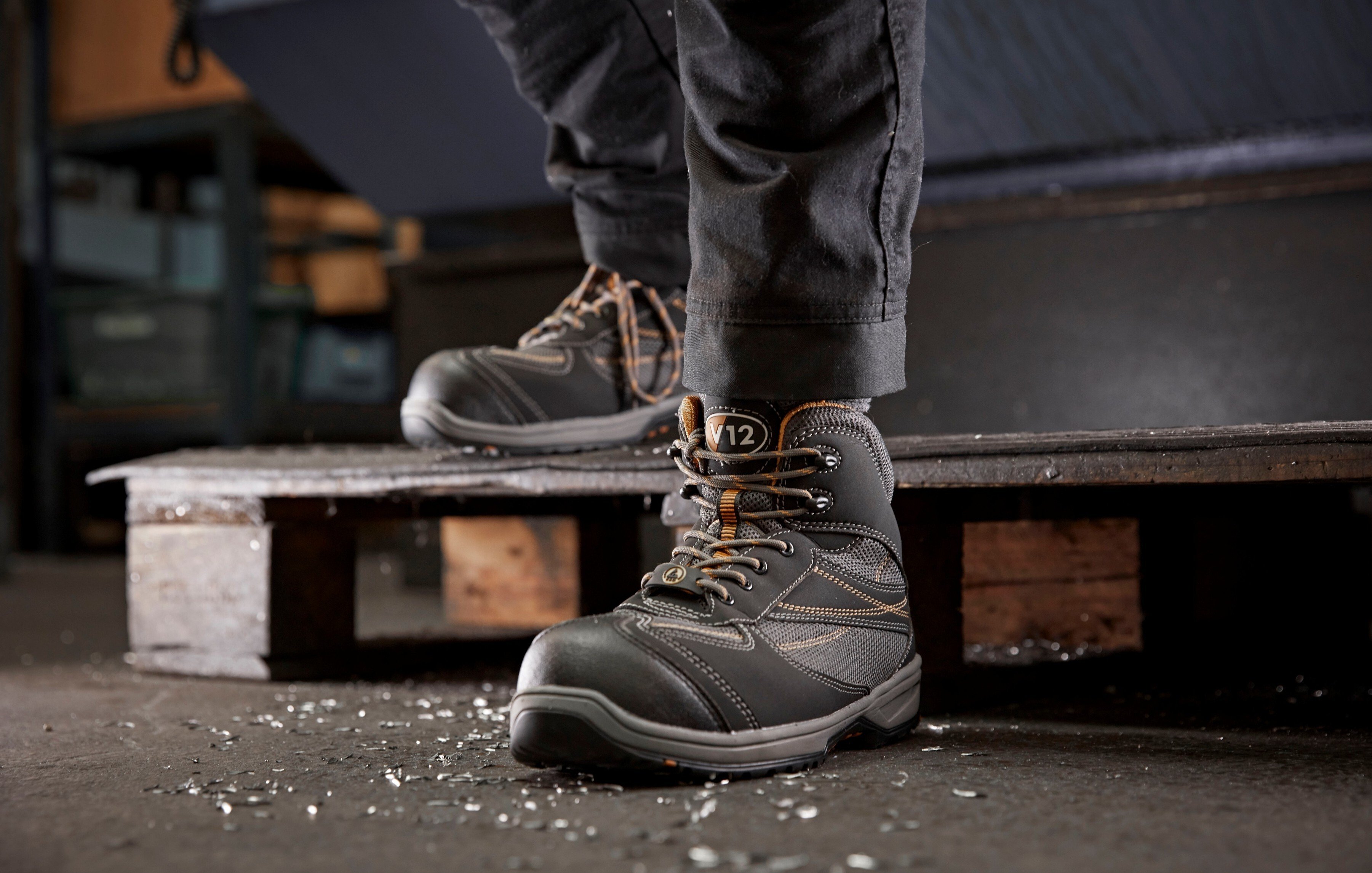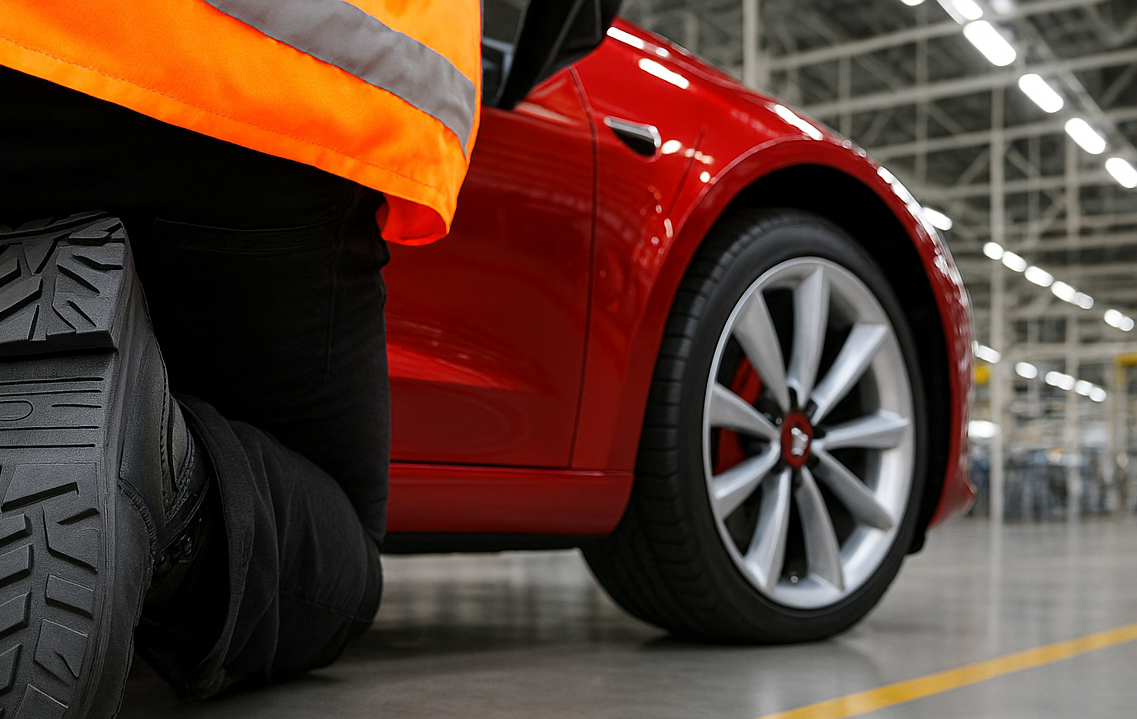If you're responsible for acquiring safety footwear for technicians who work on electric vehicles (EVs) and similar machines such as plug-in hybrid electric vehicles, it's crucial to understand which safety boots will provide the necessary protection. Working with electrical systems is a complex matter, and as EVs become more prevalent on our roads, there are more and more inquiries about electrical safety footwear from PPE procurers.
If you're unsure if your team need EH, ESD, insulated or dielectric footwear, this blog will offer you guidance and clarity.
FIRST THINGS FIRST
It's important to note that there isn't a specific type of footwear mandated for working on electric cars, because it will vary depending on the wearer's specific job role and the type of vehicle they may be working on.
What is clear though is that because EVs have high-voltage electrical systems, if you're responsible for sourcing boots for workers, they should have a form of insulated and non-conductive footwear to reduce the risk of electrical shock.
But before we find out which type might be most beneficial for your workforce, let's address an important topic.
EH (ELECTRICAL HAZARD) FOOTWEAR
There has been a significant amount of debate surrounding EH footwear since the announcement by the HSE that the EH marking may be misleading in terms of its effectiveness in preventing electrocution. It is important to understand that footwear marked EH (Electrical Hazard) is not meant to be the main source of protection when working on electrical components or in an electrical hazard environment, and will not alone give the wearer adequate protection from electrocution.
So if it's your responsibility to get a team involved in EV maintenance the right boots, it's important you understand what level of protection EH footwear does and doesn't offer.
We do not recommend EH footwear as a primary source of protection against electrocution. Isolation of the electrical current should be the safety priority, but this should come in the form of primary PPE. Safety footwear is the last line of defence and unless it is Category III footwear tested to the EN 50321 standard (more on this below) it should not be used as a tool to mitigate serious electrical risks.
We've written a comprehensive but easy to follow guide about EH footwear - read it here.
DIELECTRIC FOOTWEAR
Dielectric safety footwear, also known as insulated footwear, provides more advanced protection against electric shocks. These specialised boots are designed to minimise the risk of dangerous high voltage shocks by preventing the conduction of electricity. Recommended by the HSE for individuals working in environments where protection from electrocution is necessary, dielectric safety footwear features an electrically insulated rubber construction that can be used even in wet conditions. Its primary purpose is to safeguard against the grounding of electric current, which, if it were to pass through the wearer's body, could be fatal.
The voltages present in a modern electric vehicle's battery pack can be anywhere between 300V and 900V, so insulated dielectric safety footwear is advisable for technicians performing maintenance and diagnostics on such vehicles.
ESD (Electrostatic Discharge) footwear
If your team are working in an environment where sensitive electronics are involved, ESD footwear can prevent static electricity discharge that can damage electronic components like the ones found in electric vehicles. Ultimately, an electric vehicle is a large computer, full of the same chips and digital componentry in our laptops and phones, and so when it comes to manufacturing these types of vehicles, ESD footwear will be an appropriate choice.
However, while this is relevant for those working on EVs at the manufacturing stage, it might not apply to your workforce if they are vehicle repair, roadside recovery or emergency services responders. If this is the case and they are working on vehicles they've had no part in constructing, it's up to you to ensure they are following the correct safety guidance, as different models of electric vehicles may have different PPE recommendations within their manufacturer's handbook.
See some helpful guidance on this from the HSE here.
Important: While dielectric (and to an extent EH) footwear is isolating footwear that protects the wearer, ESD footwear is designed to protect sensitive electrical equipment from static shock damage, charges or sparks. In other words, ESD protects the components, not the wearer - essential to bear in mind if you're in charge of Heath and Safety or safety footwear procurement.
ESD or anti-static? Not sure about the difference? Find it out here.
Comfort
Mechanics who spend extended periods on their feet while working on cars require footwear that's comfortable. This is essential, as working around heavy machinery and electrical components while experiencing discomfort can lead to distraction and a dangerous decrease in safety focus. But comfort is more than just cushioning:
A boot that gives the wearer high levels of foot health and well-being should:
- Be built on a last that incorporates global foot shapes
- Feature arch-supporting insoles to reduce foot pain
- Incorporate high-quality materials to be breathable and absorb shock
- Be lightweight and flexible
Do you want our expert advice on keeping wearers safe and healthy when in their boots all day? Head to this blog.
In summary
While there isn't specific electric car repair footwear, it's crucial to remember the following to keep your team safe:
- Electrical hazard (EH) footwear doesn't alone offer full protection from electric shock. Also, if they get wet or if the sole is cut, whatever electrical insulation they offer is then voided.
- Dielectric footwear is the most reliable protection to insulate the wearer from electric shock, but even then, this might still only be considered secondary PPE.
- ESD and Anti-static are conductive footwear, which protects the components, not the wearer.
- Avoid boots with metal components like steel toecaps and metal eyelets - metal conducts electricity and poses a huge risk.
If you’re looking for electric footwear safety solutions for your team, you'll want to make sure you're giving them the right PPE. V12 can help. We can offer a product suitability assessment, which is a 3-step process to advise you on the safety footwear most suitable for your workplace environment and work-specific hazards: It includes:
- an industry-leading audit
- a safety footwear trial process
- our expert product recommendation
When it comes to keeping your team safe, you should choose the smart and safe option. To find out how to get started, click below.





